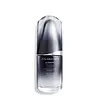What's inside
What's inside
 Key Ingredients
Key Ingredients

 Benefits
Benefits

 Concerns
Concerns

No concerns
 Ingredients Side-by-side
Ingredients Side-by-side

Epilobium Angustifolium Extract
Skin ConditioningSambucus Canadensis Extract
Skin ConditioningAchillea Millefolium Flower Extract
AntioxidantUrtica Dioica Leaf Extract
Skin ConditioningTaraxacum Officinale Leaf Extract
Skin ConditioningPrunus Armeniaca Kernel Oil
MaskingHelianthus Annuus Seed Oil
EmollientCalendula Officinalis Flower Extract
MaskingMedicago Sativa Extract
TonicSambucus Nigra Extract
Skin ConditioningEchinacea Angustifolia Extract
MoisturisingSalvia Officinalis Leaf Extract
CleansingOpuntia Ficus-Indica Seed Oil
EmollientEpilobium Angustifolium Flower/Leaf/Stem Extract
Skin ConditioningCarthamus Tinctorius Seed Oil
MaskingSpilanthes Acmella Flower/Leaf/Stem Extract
AntimicrobialRubus Idaeus Seed Extract
Skin ConditioningMonarda Didyma Oil
TonicBoswellia Carterii Resin Extract
MaskingHippophae Rhamnoides Fruit Extract
Skin ConditioningAchillea Millefolium Oil
CleansingSimmondsia Chinensis Seed Oil
EmollientSalvia Triloba Leaf Extract
AntimicrobialLimnanthes Alba Seed Oil
Skin ConditioningAstragalus Membranaceus Root Extract
EmollientUbiquinone
AntioxidantTocopherol
AntioxidantBisabolol
MaskingEpilobium Angustifolium Extract, Sambucus Canadensis Extract, Achillea Millefolium Flower Extract, Urtica Dioica Leaf Extract, Taraxacum Officinale Leaf Extract, Prunus Armeniaca Kernel Oil, Helianthus Annuus Seed Oil, Calendula Officinalis Flower Extract, Medicago Sativa Extract, Sambucus Nigra Extract, Echinacea Angustifolia Extract, Salvia Officinalis Leaf Extract, Opuntia Ficus-Indica Seed Oil, Epilobium Angustifolium Flower/Leaf/Stem Extract, Carthamus Tinctorius Seed Oil, Spilanthes Acmella Flower/Leaf/Stem Extract, Rubus Idaeus Seed Extract, Monarda Didyma Oil, Boswellia Carterii Resin Extract, Hippophae Rhamnoides Fruit Extract, Achillea Millefolium Oil, Simmondsia Chinensis Seed Oil, Salvia Triloba Leaf Extract, Limnanthes Alba Seed Oil, Astragalus Membranaceus Root Extract, Ubiquinone, Tocopherol, Bisabolol
Water
Skin ConditioningGlycerin
HumectantAlcohol Denat.
AntimicrobialButylene Glycol
HumectantDipropylene Glycol
HumectantDimethicone
EmollientXylitol
HumectantPEG/PPG-17/4 Dimethyl Ether
Skin ConditioningPEG-12 Dimethicone
Skin ConditioningPhenoxyethanol
PreservativeDiphenylsiloxy Phenyl Trimethicone
Skin ConditioningAmmonium Acryloyldimethyltaurate/Beheneth-25 Methacrylate Crosspolymer
Emulsion StabilisingCarbomer
Emulsion StabilisingErythritol
HumectantPEG/PPG-14/7 Dimethyl Ether
Skin ConditioningDipeptide-15
Skin ConditioningTocopheryl Acetate
AntioxidantPhytosteryl/Octyldodecyl Lauroyl Glutamate
Skin ConditioningParfum
MaskingAlcohol
AntimicrobialPotassium Hydroxide
BufferingSodium Methyl Stearoyl Taurate
CleansingSilica
AbrasiveDisodium EDTA
Xanthan Gum
EmulsifyingLimonene
PerfumingSodium Metabisulfite
AntioxidantPaeonia Albiflora Root Extract
Skin ConditioningMentha Piperita Leaf Extract
Skin ConditioningLinalool
PerfumingDipotassium Glycyrrhizate
HumectantHouttuynia Cordata Extract
Skin ConditioningRosa Roxburghii Fruit Extract
TonicTocopherol
AntioxidantSodium Carboxymethyl Beta-Glucan
CleansingFagus Sylvatica Bud Extract
TonicCamellia Sinensis Leaf Extract
AntimicrobialCamellia Japonica Leaf Extract
Skin ConditioningCamellia Japonica Flower Extract
EmollientCamellia Japonica Seed Extract
Skin ConditioningPerilla Ocymoides Leaf Extract
TonicBenzoic Acid
MaskingGanoderma Lucidum Stem Extract
Skin ConditioningWater, Glycerin, Alcohol Denat., Butylene Glycol, Dipropylene Glycol, Dimethicone, Xylitol, PEG/PPG-17/4 Dimethyl Ether, PEG-12 Dimethicone, Phenoxyethanol, Diphenylsiloxy Phenyl Trimethicone, Ammonium Acryloyldimethyltaurate/Beheneth-25 Methacrylate Crosspolymer, Carbomer, Erythritol, PEG/PPG-14/7 Dimethyl Ether, Dipeptide-15, Tocopheryl Acetate, Phytosteryl/Octyldodecyl Lauroyl Glutamate, Parfum, Alcohol, Potassium Hydroxide, Sodium Methyl Stearoyl Taurate, Silica, Disodium EDTA, Xanthan Gum, Limonene, Sodium Metabisulfite, Paeonia Albiflora Root Extract, Mentha Piperita Leaf Extract, Linalool, Dipotassium Glycyrrhizate, Houttuynia Cordata Extract, Rosa Roxburghii Fruit Extract, Tocopherol, Sodium Carboxymethyl Beta-Glucan, Fagus Sylvatica Bud Extract, Camellia Sinensis Leaf Extract, Camellia Japonica Leaf Extract, Camellia Japonica Flower Extract, Camellia Japonica Seed Extract, Perilla Ocymoides Leaf Extract, Benzoic Acid, Ganoderma Lucidum Stem Extract
Alternatives
Ingredients Explained
These ingredients are found in both products.
Ingredients higher up in an ingredient list are typically present in a larger amount.
Tocopherol (also known as Vitamin E) is a common antioxidant used to help protect the skin from free-radicals and strengthen the skin barrier. It's also fat soluble - this means our skin is great at absorbing it.
Vitamin E also helps keep your natural skin lipids healthy. Your lipid skin barrier naturally consists of lipids, ceramides, and fatty acids. Vitamin E offers extra protection for your skin’s lipid barrier, keeping your skin healthy and nourished.
Another benefit is a bit of UV protection. Vitamin E helps reduce the damage caused by UVB rays. (It should not replace your sunscreen). Combining it with Vitamin C can decrease sunburned cells and hyperpigmentation after UV exposure.
You might have noticed Vitamin E + C often paired together. This is because it is great at stabilizing Vitamin C. Using the two together helps increase the effectiveness of both ingredients.
There are often claims that Vitamin E can reduce/prevent scarring, but these claims haven't been confirmed by scientific research.
Learn more about Tocopherol